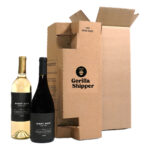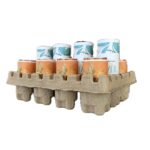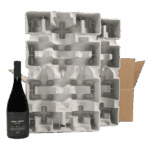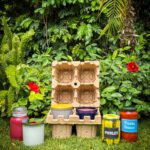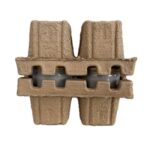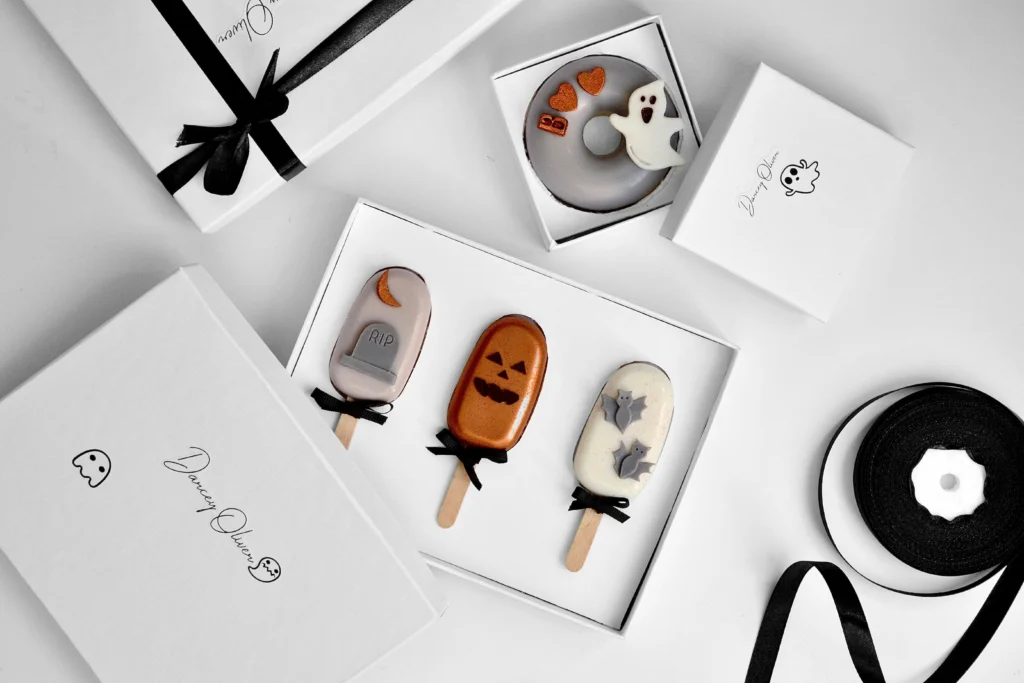A Guide to Different Types of Packaging for Your Products
Packaging plays an important role in the consumer market, influencing product integrity and aesthetic appeal. Businesses dealing with fragile and high-value items know they need packaging that’s not only sturdy but also attractive.
To help you pick the right packaging solution for your products, we list the various types of product packaging you can adopt in your marketing and branding strategy.
Check out this comprehensive guide for the best product packaging options to reduce replacement costs and enhance your brand’s image. Let’s get started!
Primary Packaging
Primary packaging serves as the first line of defense for products. It directly contacts and safeguards products throughout their lifecycle. For example, bottles with unique designs preserve flavor and integrity while allowing them to stand out on crowded shelves.
Effective primary packaging options such as bottles, cans, and blister packs safeguard contents within while ensuring user satisfaction. Beyond functionality, these packaging types significantly influence consumer perception of your brand.
Attention to ergonomics and user experience can further elevate your brand’s market position. Understanding the impact of various types of product packaging on customer satisfaction provides a much-needed competitive advantage you can capitalize on.
Secondary Packaging
Secondary packaging involves grouping primary packages into a single entity. The combination serves as a critical component in logistics and transportation. An example is boxes used by retailers to ship multiple bottles to customers.
These types of product packaging provide an additional layer of protection for valuable goods. Cartons, shrink wraps, and form-fitting inserts contribute to logistical efficiency and improve retail presentation. For instance, craft breweries may use custom cartons to ship their beers, reinforcing brand identity upon delivery.
Learn to balance cost and functionality to optimize packaging strategies without compromising quality. In today’s marketplace, this skill will help you choose solutions that meet unique company needs while maintaining customer satisfaction. Experiment with product packaging options whenever possible to gather feedback and increase repeat business.
Tertiary Packaging
Tertiary packaging focuses on bulk handling and distribution, ensuring products reach their destination safely and efficiently. For example, a winery shipping an extensive order to a distributor relies on pallets and crates to secure the bottles during transport.
This type of product packaging adds an essential layer of protection against damage and facilitates faster storage and movement within warehouses. Large cardboard boxes and standardized pallets impact global supply chain speed. With forklifts and handcarts, shipments are much easier to load and unload, saving valuable time.
Additionally, it’s important to consider environmental impact, as many businesses are adopting reusable and recyclable materials to minimize waste. The types of product packaging you choose can optimize logistics while maintaining the integrity of goods. Include tertiary solutions to streamline operations and expand distribution strategies.
Types of Materials Used in Packaging

The right product packaging options positively impact product protection and presentation while maximizing your bottom line. Below are some packaging materials to consider.
Paper and Cardboard
Paper and cardboard are lightweight types of product packaging that can reduce shipping weight. Their versatility makes them extremely popular, and customers can easily recycle them after delivery.
A winery that ships products with corrugated cardboard boxes can benefit from reduced costs and an eco-friendly image. However, these materials may lack durability, especially in moist conditions.
Plastic
Plastic offers flexibility and strength, which makes it ideal for various product packaging options. Craft breweries might use shrink wrap to bundle cases of beer securely. Despite its versatility, plastic’s negative environmental impact prompts many businesses to explore sustainable alternatives.
Glass
This tried-and-true option provides an excellent barrier against contaminants, helping maintain product integrity. Wine and olive oil manufacturers often opt for glass bottles to preserve flavor and quality. The primary drawbacks of glass are its fragility and weight, contributing to higher transportation costs.
Metal
Aluminum cans are durable enough to handle moderate shipping conditions. Their greatest advantage is their ability to protect the contents inside from light and air. Many businesses prefer metal due to its strength and recyclability. However, their relatively higher cost can be a hurdle for budget-conscious companies.
Wood
Wooden crates offer both visual appeal and functionality, enhancing the unboxing experience. Monthly wine clubs frequently use wooden boxes for their premium shipments, adding a touch of luxury. While the upscale presentation justifies higher pricing, shipping costs and bulkiness are drawbacks to consider.
Composite Materials
Composites blend the strengths of various packaging types, offering tailored solutions. Liquor companies might use composite options for shipping bulk orders, balancing durability and cost-efficiency. This approach ensures products remain secure while optimizing logistics.
Trends in Product Packaging

Adopting the latest trends in packaging helps you stand out from the competition. To the consumer, your willingness to implement innovative solutions positions your brand as a leader that positively influences the industry.
For instance, a plant-derived candle manufacturer could leverage sustainable types of product packaging to align with eco-conscious values. This extra effort would directly impact brand appeal while validating company messaging.
Here are a few breakout product packaging options to consider right now.
Personalization
Coca-Cola’s “Share a Coke” campaign replaces their iconic logo with popular names. The experience drove significant engagement and sales growth that other industries can mimic.
Edible Packaging
Loliware now offers edible straws made from seaweed. This sustainable alternative to plastic reduces waste while providing an innovative twist to beverage packaging.
Smart Technology
Heinz incorporates QR codes consumers can scan to access recipe ideas and product information. Smart packaging helps position the ketchup maker as an expert in the condiment segment.
Interactive Augmented Reality
19 Crimes wine bottles feature labels that come to life through augmented reality apps. When scanned, these labels tell the historical stories of the convicts depicted on the bottles, creating an engaging and educational user experience.
Final Thoughts
Product safety and brand perception are the two primary objectives when considering different types of product packaging. As discussed, trends like personalization and smart technology are reshaping how businesses approach packaging.
We encourage you to stay updated and in the loop with these innovations. Doing so will help your brand maintain a competitive edge while meeting consumer aspirations for sustainability, convenience, and enhanced user experiences.
If you need reliable packaging solutions for your products, explore our vast inventory. We offer corrugated cardboard, molded pulp, and foam packaging solutions for bottles, jars, cans, candles, and so much more. With our bulk pricing, the more you buy, the more you can save! Contact us to inquire about our custom packaging options.

